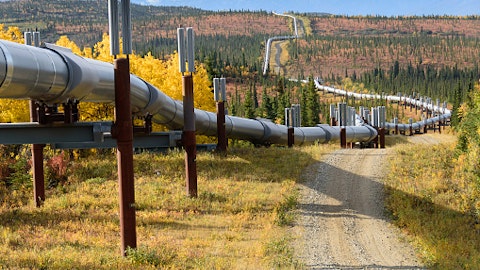Steve Ledbetter: Yes. This is Steve. I’ll take that. I think you hit it head on. We see some tightening in terms of the overall margin structure in the back half of the year, partially due to feedstock but also the RVO standard, what that’s done and then the LCFS supply that’s kind of on the market. So we are looking to optimize our feedstock. We run a good portion of soy, but we have the ability to go take advantage of some low CI feedstocks. — and we’ve got plans in place to go do that in the back half of the year. As far as the PTU, it’s running very well. And we see that as a competitive advantage to our business and laying that in into some of the other assets where we could take advantage of that integration.
Roger Read: And one follow-up on that. Your hydrogen production, is that doing what you had anticipated across the RD facilities.
Steve Ledbetter: Yes. I mean, so as far as the hydrogen consumption and production, with the co-located plants, we had both of them down this quarter due to turnaround, which did impact the hydrogen availability to go run. And unfortunately, that was in two of the early months where margins were more supportive. But that’s really just planned circumstance of the maintenance activities that were needed to be handled. But overall, we feel comfortable with our hydrogen availability to go run these plants and generate the products that we choose to put in the markets that we choose.
Atanas Atanasov: And this is Atanas. I’ll only add that, again, as we mentioned earlier, one of the benefits of the co-located turnarounds is, particularly as it relates to our reformer unit is that turnaround ends up improving the reform of reliability and, therefore, the availability and supply of hydrogen and we have a number of other ongoing improvement efforts in the hydrogen plants, both at Navajo and Parco as well as Cheyenne So…
Roger Read: Great. Thank you.
Operator: We’ll take a follow-up from Paul Cheng at Scotiabank.
Paul Cheng: Thank you. Two questions, please. I want to go back into LP. I know that you’re talking about the hydrogen availability. I mean, in order for you to run closer to, say, the [indiscernible], hydrogen was bottleneck, and I believe Tim had mentioned that you guys are working to substantially improve that availability and then may take until 2024. So can you give us an update on where are we on that to have sufficient hydrogen on site so that we will be able to under LP at a much higher rate than, say, the 75%, 80% in sales, you have to let the decision between running the diesel for the refinery or the running the LP and also that I think you guys have changed the customers. Can you give us an idea that the benefit on them in terms of the yield? And also that what’s the duration that you will take now for you to make a — to change their customers. I think previously, you’ve been doing about six months — are we going to say any at a much longer duration.
Tim Go: Yes, Paul, this is Tim. Let me take a shot at some of the short-term questions and then I’ll ask Val to comment on some of the long-term – longer-term efforts we’re talking about. So we believe that with these turnarounds that we just completed in the second quarter and with some of the short-term hydrogen optimization steps that Val and team have been able to implement. And we will be able to run normalized run rates here in the second half of the year. And when we say normalized run rates, we’re talking 75% to 80% utilization, right? And you kind of mentioned that number before. And we do think we can get to that level with the current facilities we have. Now, on a long-term basis, we are continuing to look ways to the bottleneck and expand hydrogen production.
I can let Val talk a little bit about that in a few minutes, but I just wanted to make it clear that we do think we have a path forward here in the second half of the year to hit this from normalized run rates.
Valerie Pompa: Yeah. This is Valerie. So on the hydrogen, as you mentioned, with specific the co-located sites, we have reformers that we just went through turnarounds on. We’ve made significant improvements in those assets and reliability is expected and what we’re seeing today is improving. Additionally, our hydrogen generation in context, we have several low-capital operational program improvements that will start to take place in the back half of the year. And we anticipate that, that will continue. Those small improvements will directionally add up to give us more hydrogen capacity as we go through the year. And then we’re looking at what’s next as we look forward. Let me comment a bit on catalysts. So we — our catalyst is performing well.




